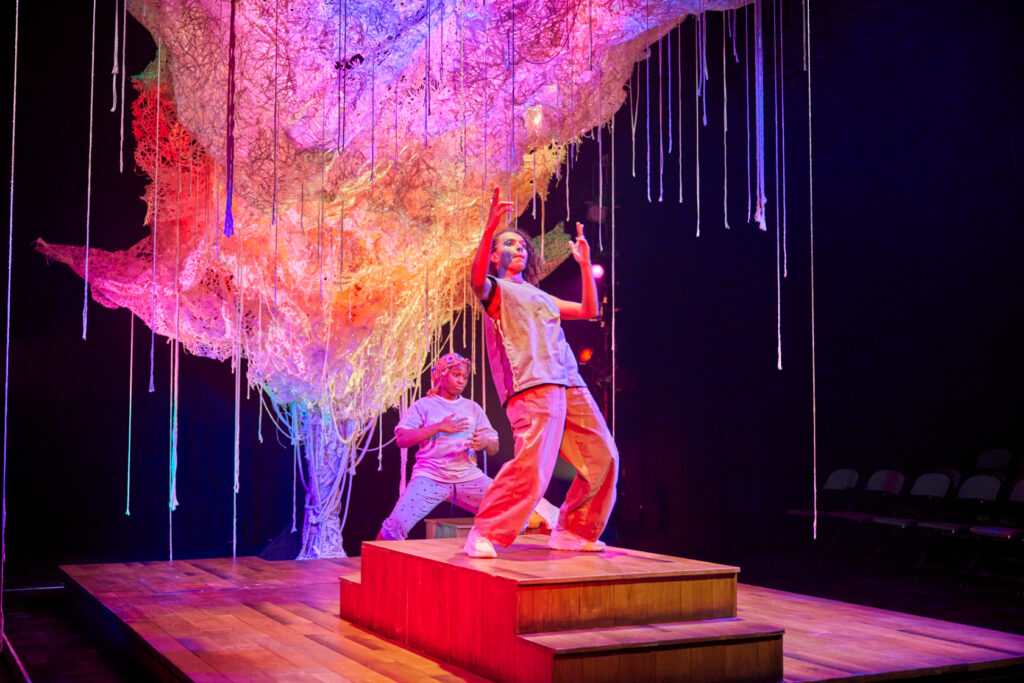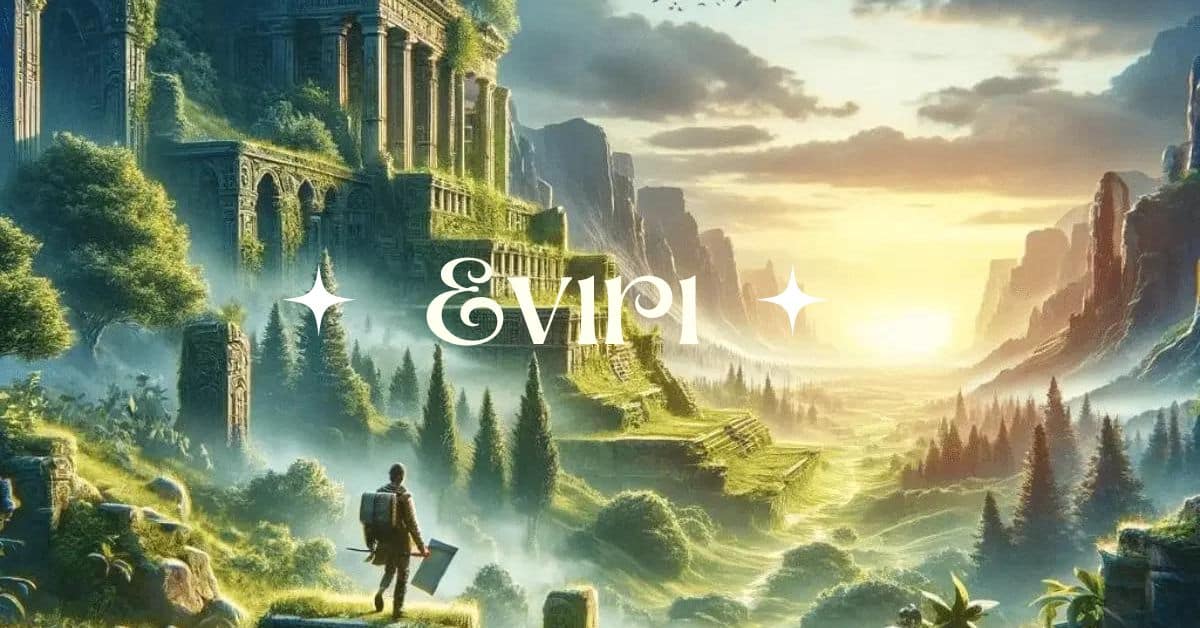Evırı – A Journey Through Anatolia’s Soul In Dance!
In the heart of Anatolia, where ancient stones whisper tales of bygone eras, a vibrant tapestry of culture unfolds. Among its rich threads lies Evırı, a traditional Turkish folk dance that transcends mere movement.
It’s a pulsating expression of Anatolian heritage, a celebration of life itself, and a captivating window into the soul of a nation.
This article embarks on a journey to explore the captivating world of Evırı, delving into its historical tapestry, cultural significance, and its enduring legacy in a modernizing world.
Unearthing Evırı’s Ancient Roots:
The exact origins of Evırı remain shrouded in the mists of time. Its story begins in the cradle of Anatolia, a land that witnessed the rise and fall of civilizations like the Hittites, Phrygians, Urartians, and more.

Each culture left its indelible mark, influencing not just Anatolian life, but also the nascent form of Evırı. Historians believe this folk dance was passed down through generations, evolving organically alongside the ever-changing cultural landscape of Turkey.
A Blend of Influences, a Tapestry of Movement:
Anatolia served as a crossroads for millennia, a fertile ground where diverse cultures intermingled. This rich tapestry of influences is evident in the very essence of Evırı. The dance incorporates elements from various regions, each adding a unique flavor.
Some styles showcase graceful, sweeping movements reminiscent of ancient Anatolian rituals, while others pulse with a vibrant energy that reflects the influence of nomadic tribes.
Celebrating Life with Lively Steps and Soulful Melodies:
Evırı is a celebration of life, a joyous expression of gratitude for existence itself. Its very essence embodies unity and community, bringing people together in a way that transcends language and social barriers.
The dance is characterized by rhythmic footwork and expressive hand gestures, a captivating dialogue between the dancers and the music.
Attire that Speaks Volumes – A Visual Symphony:
Dancers, often adorned in vibrant traditional attire, become living testaments to Anatolian aesthetics.
Flowing dresses and embroidered vests for women, and bold vests and loose trousers for men, create a visual symphony that complements the dance’s energy. The colors themselves hold significance, with reds symbolizing passion, greens representing nature’s bounty, and gold reflecting Anatolia’s rich history.
Instruments that Bring Evırı to Life:
The music that accompanies Evırı is as integral to the experience as the dance itself. Instruments like the clarinet, with its soaring melodies, provide a sense of joyful abandon.
The rhythmic pulse of the davul (a double-headed drum) keeps the energy high, while the zurna, a piercing oboe-like instrument, adds a touch of excitement. Together, they create a soundscape that entices both dancers and spectators to join in the celebration.
Evırı – A Cultural Gem that Fosters Community!
Evırı holds a place of immense significance in Turkish culture. It serves as a bridge between generations, a way of passing down cherished values and traditions.
Through Evırı, the spirit of Anatolia remains alive, its history etched into every step and gesture. One of the most crucial aspects of the dance is its ability to foster a sense of community.
A Stage for Joy – Where Evırı Thrives!
Evırı’s versatility allows it to grace a multitude of settings. It is a mainstay at festive gatherings, weddings, and cultural events, where people come together to strengthen bonds and celebrate life’s milestones.

The dance transcends age, gender, and social status, inviting everyone to participate in the joyous festivities.
- Weddings: Evırı is a beloved feature of Turkish weddings, often serving as the highlight of the celebration. Both the bride and groom actively participate, adding to the joyous atmosphere and creating unforgettable memories.
- Festivals: Many Turkish festivals and cultural events showcase Evırı performances. It symbolizes cultural pride and provides a connection to Anatolia’s roots. These vibrant events allow both Turks and visitors a chance to experience the heart of Turkish culture.
- Family Gatherings: Evırı is not limited to grand celebrations; it is equally at home in family gatherings and smaller-scale events. The dance brings warmth and a sense of togetherness to these intimate settings.
Evırı’s Evolution – Embracing Change While Holding Onto Tradition!
While deeply rooted in tradition, Evırı has not remained stagnant. This evolution reflects the very essence of Turkish culture itself – adaptable and resilient. Contemporary interpretations of Evırı often incorporate new elements or fuse with other dance forms.
Some choreographers and dance troupes breathe fresh energy into Evırı while staying true to its spirit. These innovations have allowed the dance to remain relevant, appealing to younger generations and a global audience.
Safeguarding the Legacy – Efforts to Preserve Evırı!
Turkish cultural organizations and institutions play a vital role in safeguarding this cultural gem. They organize workshops, performances, and events that educate the public about Evırı and provide a platform for practitioners to hone their skills.
These initiatives ensure that the knowledge and techniques required to perform Evırı are passed down to future generations.
The Turkish government also recognizes the importance of protecting and promoting the country’s cultural heritage. It supports initiatives focused on preserving and revitalizing traditions like Evırı.
Evırı’s Global Reach – A Dance that Transcends Borders!
Evırı’s influence extends far beyond the borders of Turkey. Turkish communities worldwide continue to practice and celebrate this dance, maintaining a vital connection to their Anatolian heritage.
In Europe and North America, Evırı has found a home among Turkish expatriates and their descendants. These communities organize cultural events where Evırı performances take center stage, fostering a sense of belonging and cultural identity.
The global popularity of Turkish cuisine, music, and cinema has also played a role in Evırı’s international recognition. The dance is often featured in Turkish films and television shows, showcasing its vibrancy to a wider audience.
Also Read: Raquel Welch Spouse – A Life In Love And Light – Beyond The Bonds Of Four Spouses
Challenges and the Road Ahead:
Despite its enduring appeal, Evırı faces challenges in the modern world. Urbanization, globalization, and changing lifestyles have impacted the traditional settings where the dance once thrived.
Balancing the preservation of Evırı’s authenticity with adaptation to contemporary contexts is essential for its continued survival.
Documenting Diversity – Archiving Evırı’s Many Faces!
Efforts are underway to document and archive the various regional styles and variations of Evırı. This meticulous process ensures that the unique characteristics of Evırı from different parts of Anatolia are preserved for posterity.
Videography, notation systems, and detailed descriptions are employed to create a comprehensive record of Evırı’s rich tapestry.
Also Read: A Bittersweet Bite: Exploring The Emotional Depth Of Asahina-San No Bentou Tabetai Chapter 5
Education and Exchange – Nurturing New Generations of Evırı Enthusiasts!
Educational programs play a crucial role in introducing Evırı to new generations. Integrating Evırı into school curriculums or organizing workshops can spark interest in young minds and inspire them to learn this traditional dance form.

Cultural exchange initiatives are another way to ensure Evırı’s future. Collaborations between Turkish cultural organizations and international institutions can introduce Evırı to new audiences and foster intercultural appreciation for this unique art form.
Also Read: Alevemente: Unveiling The Potential Of A Natural Wellness Revolution
The Future of Evırı – A Collective Effort!
The future of Evırı rests on the collective efforts of the Turkish people and cultural enthusiasts worldwide. By embracing this dance and celebrating their heritage, they can ensure that Evırı remains a vibrant and cherished part of Turkish culture. Here are some key ways to ensure Evırı’s continued legacy:
- Supporting Cultural Organizations: Donating to or volunteering with Turkish cultural organizations directly supports their efforts to preserve and promote Evırı.
- Learning Evırı: Consider taking Evırı dance classes to experience the joy of this art form firsthand. There might be online classes or workshops available depending on your location.
- Sharing Evırı: Attending Evırı performances or sharing videos of Evırı on social media can raise awareness about this captivating dance.
- Traveling to Anatolia:
Immersing yourself in Turkish culture by visiting Anatolia can provide a firsthand experience of Evırı in its natural setting.
Frequently Asked Questions:
1. Can anyone learn Evırı?
Absolutely! Evırı welcomes people of all ages, backgrounds, and experience levels. While mastering intricate regional variations might take dedication, the basic steps and movements are approachable for beginners.
Online tutorials, workshops, or classes offered by Turkish cultural centers can be a great starting point.
2. What is the difference between Evırı and other Turkish folk dances?
Turkey boasts a rich tapestry of folk dances, each with distinct characteristics. Evırı’s energetic footwork and use of specific instruments like the zurna set it apart.
Compared to the whirling movements of the Mevlevi Sema or the graceful arm movements of Karşılama, Evırı emphasizes lively jumps and steps.
3. How has Evırı evolved over time?
Evırı’s adaptability is a key to its survival. While staying true to its core traditions, contemporary interpretations incorporate new elements or even fuse with other dance forms. This evolution ensures Evırı stays relevant, appealing to younger generations and a global audience.
4. How is Evırı being preserved in the modern world?
Several initiatives are underway to safeguard Evırı’s legacy. Cultural organizations document regional variations, educational programs introduce Evırı to new generations, and technology like video recordings helps archive its unique movements.
Social media platforms further amplify Evırı’s reach, allowing a global audience to discover and appreciate this captivating dance.
Conclusion:
Evırı is more than just a dance; it’s a bridge to the past, a vibrant tapestry woven from the rich threads of Anatolian history and culture. It’s a celebration of life, a testament to the enduring human spirit, and a powerful force that unites communities.
As the world continues to evolve, Evırı’s ability to adapt and embrace change will ensure its survival for generations to come.






